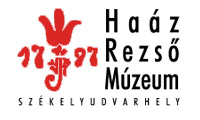Kovács Petronella (szerk.): Isis - Erdélyi magyar restaurátor füzetek 14. (Székelyudvarhely, 2014)
Mester Éva: Nagyméretű üvegfestmények "in situ" vagy műtermi restaurálása
fied. Additionally, the degree of the contamination can be measured and the production techniques employed can be established. All this, together with the findings of X-ray photographs, pH measurements, and pigment investigations, affords assistance to conservators in their selection of the procedures, materials, and treatment substances to be used. With regard to the findings of the investigations into the contaminants, we need to decide whether these contain historical information and whether their retention will assist the analysis of finds. It is important to bear in mind that the materials used to mummify bodies, the making of X-ray photographs, the use of certain disinfectants and plastic coatings, treatments with water, and aluminium foil placed under the ball of earth when a find is lifted out of the ground all impede accurate investigation of textiles. Before the starting of the conservation work, an appropriate environment for the work of art needs to be created. In the case of a find assemblage consisting of many pieces, it is necessary to ensure transportation and the storage of those fragments which are not yet under treatment. In the case of archaeological textiles, the aims are to impede the spread of deterioration processes in the fabric, to prevent additional damage of various kinds, and to develop an overall aesthetic picture of the work of art. During conservation, the following types of treatment can be employed: disinfecting, dismantling, cleaning, humidification, conservation of stitching, preparations for reconstruction, and the creation of the circumstances for storage and exhibition (preventive conservation). Cleaning of artefacts may be performed mechanically, by soaking them in water, or by applying ion-exchange synthetic resin to them. Disinfectants need to be used when infection has already developed. The taking apart of textiles can be partial, but may affect the entirety of the stitching also, depending on the condition of the find. Loosely-attached soiling found on the surface of fabrics may be removed mechanically. As well as serving to remove soiling, cleaning with water also makes it possible to replace some of the water lost from the fibres of fragile threads, thus making them suppler. Owing to the softening effect of the water, out-of-shape textiles can be smoothed out after the treatment. Textiles covered in thick, hard corrosion can be cleaned using ion-exchange resins. Humidification of fabrics can be carried out in a humidification cabinet or using a semi-permeable membrane or damp tissue paper. The disassembly, cleaning, and rehydration of archaeological textiles are not always performed in the same order, since textiles from different environments require different treatment schedules. The difference needs to be made between the conservation of textiles brought to light from a dry environment and the conservation of textiles brought to light from a wet and waterlogged one. Because it reinforces them statically, conservation of the stitching of archaeological textiles is performed on a stmcture which supports them on the reverse side. If a work of art is so fragile that use of backing material does not afford it sufficient protection, the two layers can be covered with a thin, loosely-woven silk fabric. By sewing cmmbling fragments between two thin pieces of fabric, appropriate protection can be afforded them without the additional physical damage to the object that needle marks would cause. Backing has the additional effect of substituting missing areas. The repair of embroidery may be justified by considerations of statics. In the case of metal threads, repairs are made using coloured cotton thread. With a three dimensional object or attire, repairs may be made on the basis of fitting analogies and according to the original technique, with the marking of the principal features, avoiding solutions that are rich in detail. If conservation has been preceded by disassembly, the different fabric parts treated must be put back together in the light of the original technique. Reconstruction of archaeological textiles can be made using materials identical with the original ones and also identical techniques, but may be effected in sketch form also. When optimal conditions created for the storage and exhibition of archaeological textiles are regularly checked using measuring devices, the condition of the works of art can be stabilised reassuringly going forward. Károly László A preliminary presentation of a stove-tile find from Csíksomlyó From the 15th century onwards, pottery output increased in Transylvania and pottery centres developed there. In these centres, certain skilled craftsmen went beyond the production of household pots and started to make stove-tiles, used in the building of heating and cooking structures. These stoves were built in the rooms of castles and manor houses for the most part. One such manor house stood on the site of today’s Fodor house in Sumuleu (Csíksomlyó), a village already absorbed into the town of Miercurea-Ciuc (Csíkszereda). A significant discovery of stove-tiles was made on this site in 2011. Six different stove-tiles were unearthed, most of them in a condition that permitted almost total reconstruction. All of these stove-tiles are unglazed and all are made of clay containing mica. Perhaps the most beautiful of them all is a stove-tile from the early 17th century with Italian pot and tulip decoration; it is not yet restored. Also notable is a decorated square stove-tile of a type found in some other manor houses as well. This stove-tile is probably from the 17th century. In the assemblage, there are three types of stove-tile with a brocade pattem. This type is known to have been made by the Habans (Hutterites), but later on became very popular amongst local potters also. A common characteristic of all three is that their curved decoration would form a complete circle if several such stovetiles were put together. Stove-tiles with a brocade pattem that date from the 17th or 18th century can be found in figs. 145
